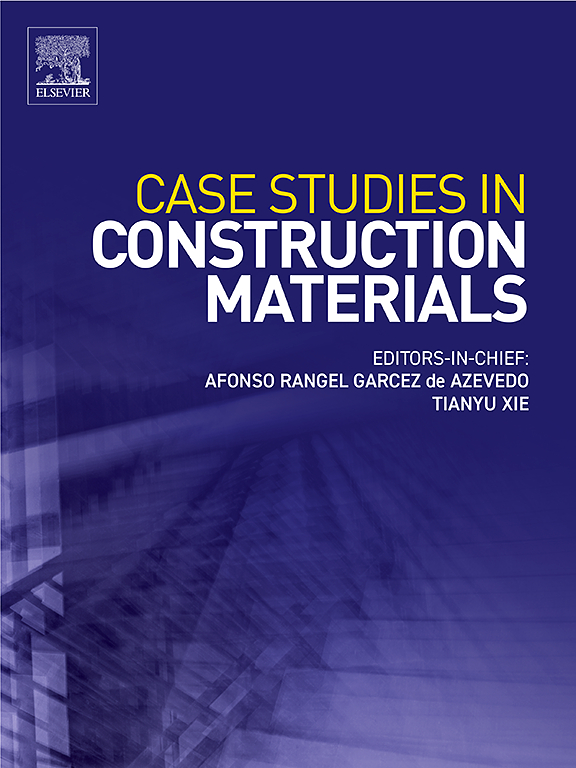A multi-visual measurement method for ultimate tensile elongation of steel strand based on spatial characteristics
IF 6.6
2区 工程技术
Q1 CONSTRUCTION & BUILDING TECHNOLOGY
引用次数: 0
Abstract
Prestressed steel strands exhibit remarkable strength and relaxation properties, making them essential in engineering projects such as bridges and high-rise buildings. Traditional contact-based measurements using strain gauges typically require adhesive bonding, which may pose mechanical injury risks to operators and surface damage to the strands, and their accuracy is generally limited to ±0.05 mm. To address these limitations, this paper proposes a novel multi-camera machine vision -based measurement technique that utilizes a synchronized four-camera stereo vision system and a data-driven spatial deformation correction model to measure the elongation rate of prestressed steel strands under ultimate tensile loads. Unlike existing contact or single-camera systems, our approach captures real-time transverse and longitudinal deformations through synchronized multi-view imaging and processes them via an advanced spatial deformation model. Uniaxial tension tests were conducted on nine repeated samples of the same steel strand material, divided into three separate batches. The repeated tests were performed under consistent conditions to ensure reproducibility and reduce experimental randomness. All specimens shared the same diameter, twisting structure, and were tested within the ambient temperature range of 15 °C to 35 °C.Compared with reference strain gauge data (baseline error ±0.05 mm), the proposed method achieved a deviation of less than 0.02 mm across all scenarios. Its non-contact, high-precision measurement capability and adaptability to multiple strand types demonstrate feasibility for both laboratory testing and in-field inspections.
基于空间特性的钢绞线极限拉伸伸长多视觉测量方法
预应力钢绞线具有显著的强度和松弛性能,使其在桥梁和高层建筑等工程项目中必不可少。使用应变片的传统接触式测量通常需要粘合剂粘合,这可能会对操作人员造成机械损伤,并对钢绞线造成表面损伤,其精度通常限制在±0.05 mm。为了解决这些限制,本文提出了一种新的基于多摄像头机器视觉的测量技术,该技术利用同步四摄像头立体视觉系统和数据驱动的空间变形校正模型来测量预应力钢索在极限拉伸载荷下的伸长率。与现有的接触式或单相机系统不同,我们的方法通过同步多视图成像捕获实时横向和纵向变形,并通过先进的空间变形模型对其进行处理。对同一钢绞线材料的9个重复样品进行单轴拉伸试验,分为3个批次。重复试验在一致的条件下进行,以确保再现性并减少实验随机性。所有试件具有相同的直径,扭曲结构,环境温度范围为15°C至35°C。与参考应变片数据(基线误差±0.05 mm)相比,该方法在所有场景下的偏差均小于0.02 mm。它的非接触式,高精度的测量能力和对多链类型的适应性证明了实验室测试和现场检查的可行性。
本文章由计算机程序翻译,如有差异,请以英文原文为准。
求助全文
约1分钟内获得全文
求助全文
来源期刊

Case Studies in Construction Materials
Multiple-
CiteScore
7.60
自引率
19.40%
发文量
842
审稿时长
63 days
期刊介绍:
Case Studies in Construction Materials provides a forum for the rapid publication of short, structured Case Studies on construction materials. In addition, the journal also publishes related Short Communications, Full length research article and Comprehensive review papers (by invitation).
The journal will provide an essential compendium of case studies for practicing engineers, designers, researchers and other practitioners who are interested in all aspects construction materials. The journal will publish new and novel case studies, but will also provide a forum for the publication of high quality descriptions of classic construction material problems and solutions.
 求助内容:
求助内容: 应助结果提醒方式:
应助结果提醒方式:


